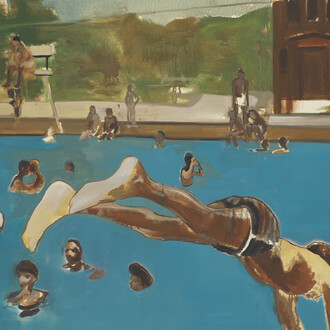James Fuentes is pleased to announce Juanita McNeely: Works on paper. Drawn from an immense archive, this exhibition brings into perspective a key facet of the artist’s oeuvre, spanning works in diverse mediums on paper from the 1960s through to the 2010s.
For McNeely, the act of drawing was inseparable from the powerful instinct and imagination that drove her practice. Using combinations of watercolor, pastel, charcoal, and pencil, sometimes experimenting on found and photocopied materials, working on paper offered a wide-open testing ground for her observations of the human body and its thresholds. Animals also appear frequently, occupying the works like fragments of dream or feverish hallucination, tethered to sensation. Oftentimes originating the compositions for her larger paintings on canvas, there is a direct line from McNeely’s suggestive marks on paper to the way she would handle paint. Extending the oil paint with turpentine to keep the surface thin and responsive, she was sensitive to what she called the “heavy feeling” of too much paint. At times, with a controlled drop of the solvent she might also tap away unwanted areas with a paper towel. This was a trick learned from printmaking, which holds an important place within her work on paper, and was an early influence to her output on the whole.
At Westbeth—the New York artist housing that she lived in from the 1970s until her passing in 2023—McNeely was active in a group of artists who rehabilitated the building’s basement print studio. This was no small effort, and printmaking became part of her daily routine for some time, offering McNeely a material extension of her painting practice as well as a rhythmic counterpoint to it. McNeely drew and painted in the light-filled hours in her studio overlooking the Hudson River, then descended in the later afternoon to the basement studio to immerse herself in print. Monoprints, in particular, drew her in with their immediacy and mutability—so close to painting, yet beholden to the resistance of the plate and the unpredictability of the press. In many ways, McNeely would draw and paint simultaneously—moving back and forth from the surface, applying and removing areas—her whole body involved in working spontaneously to capture movement and vitality. In both, she always remained attuned to the periphery; to what transforms when one shifts position or proximity, as she continually did.
















